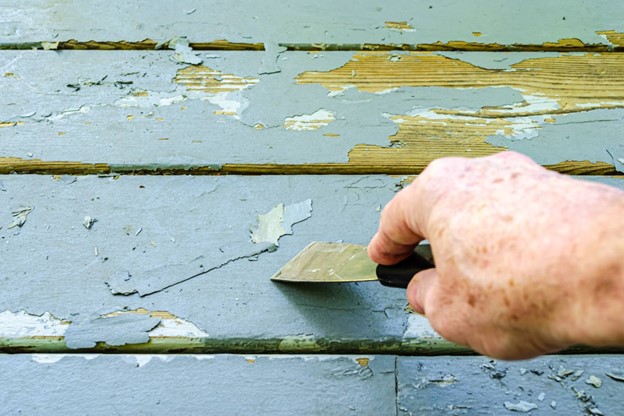When surfaces begin to show wear and tear, one of the best ways to breathe new life into them is through paint stripping. Whether it’s a metal railing, a fence or even a door, removing old paint can restore these surfaces to their original beauty. It’s a process that improves not just aesthetics but also helps protect and maintain surfaces over time.
At 4 Seasons Painting, we know that paint stripping is often the first step in many successful restoration projects. Let’s explore the process, the tools involved, and how this service can enhance your home or commercial space.
Key Features of Paint Stripping
When it comes to stripping paint from metal surfaces, there are a few main methods to consider. Choosing the right approach depends on the type of surface, the number of paint layers, and the desired outcome.
● Chemical Stripping: This method uses paint stripper, a chemical solution designed to break down layers of paint. It’s highly effective for metal surfaces, especially those with intricate details that make sanding or scraping difficult. Different types of paint strippers are available, from eco-friendly options to industrial-strength solutions.
● Heat Stripping: Heat guns or infrared tools can soften the paint, making it easier to remove. This method is particularly useful for large metal surfaces where using chemicals may not be practical.
● Mechanical Stripping: Involves sanding or using abrasive tools like wire brushes to physically remove paint layers. It works well for surfaces that can withstand the pressure of manual or machine scraping.
How to Use Paint Stripper: A Step-by-Step Guide
Using paint stripper can seem daunting, but with the right precautions and steps, it’s a straightforward process.
- Prepare the Area: Ensure you’re working in a well-ventilated space. Lay down protective sheeting to catch any stripped paint, and wear protective gloves, goggles and a mask.
- Apply the Paint Stripper: Using a brush or roller, apply an even layer of the paint stripper to the surface. Follow the product’s instructions, allowing it to sit for the recommended amount of time.
- Wait for the Paint to Bubble: As the paint stripper works, you’ll notice the paint starting to blister and peel away from the surface.
- Remove the Paint: Use a plastic scraper or wire brush to gently remove the loosened paint. Be careful not to damage the underlying metal surface.
- Clean the Surface: Once all the paint is removed, clean the surface with water or a neutraliser (depending on the stripper used) to ensure no residue remains.
Safety Precautions
● Always wear protective gear, including gloves and safety glasses, when working with chemical paint strippers.
● Work in a well-ventilated area or outdoors to avoid inhaling fumes.
● Ensure all materials, including rags and brushes, are disposed of safely after use.
Restore Surfaces with 4 Seasons Painting
Paint stripping is a crucial step in restoring and maintaining the beauty and functionality of surfaces, particularly when working with metal. It can remove years of buildup, rust and old paint layers, leaving behind a clean slate for a fresh coat of paint or a sleek, polished look.
For those looking to restore their surfaces to perfection, 4 Seasons Painting offers professional paint stripping services across the Wellington region. Our team of experts ensures that the process is safe, effective, and tailored to the specific needs of each project.
Ready to restore your surfaces to their original state? Contact 4 Seasons Painting today for expert advice and professional paint stripping services. Whether you’re dealing with rusted metal or thick paint layers, our team can help you achieve flawless results.


